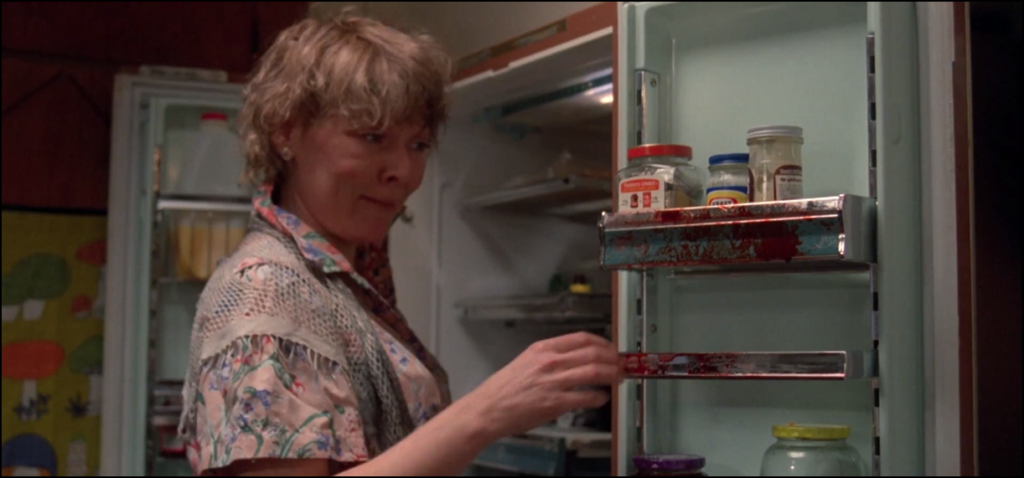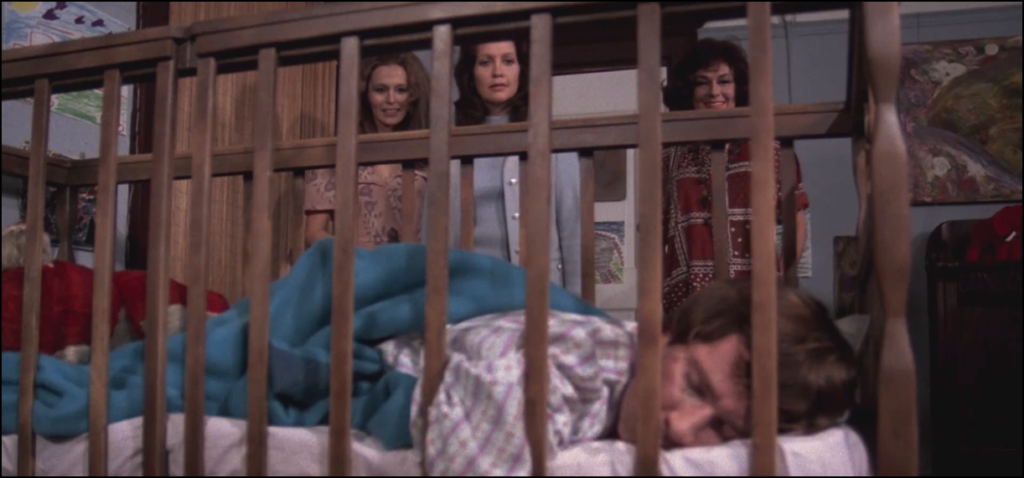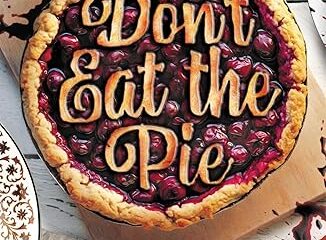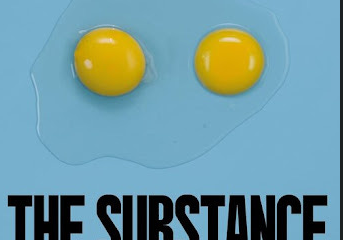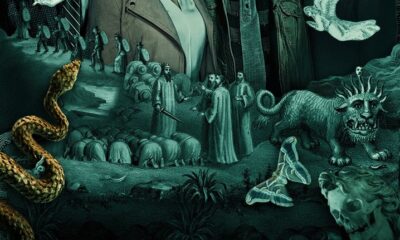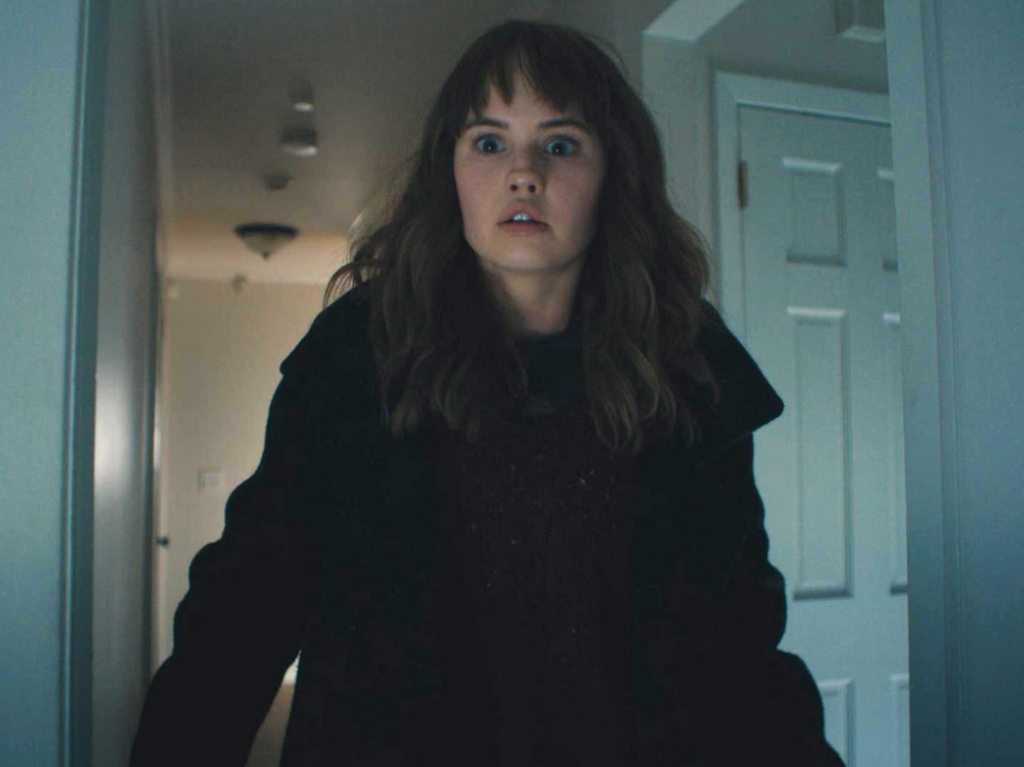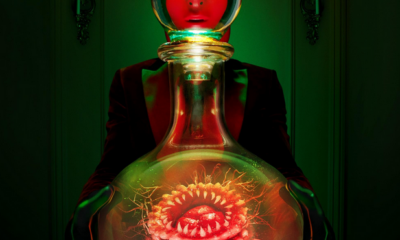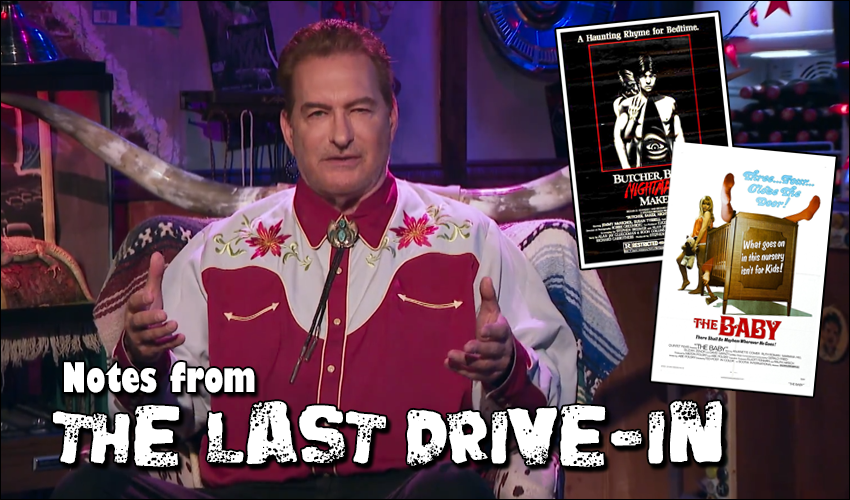
Notes from the Last Drive-In: S4E7 – ‘Butcher, Baker, Nightmare Maker’ and ‘The Baby’
More Videos
Published
2 years agoon
Welcome back for another night at the Drive-In with venerable host Joe Bob Briggs with an arrested development double feature of Butcher, Baker, Nightmare Maker (1981) and The Baby (1973). This episode is S4E7, and we get a night with a theme that works better than previous nights this season, anchored by two strange films about sexual confusion, infantilized male victims, and bold and assertive character actresses.
So, does Shudder‘s best show dazzle this week, or is it caught in a state of arrested development? How does it compare to last week’s double feature? Let’s find out together.
#TheLastDriveIn #ButcherBakerNightmareMaker https://t.co/GFvRJADrHD pic.twitter.com/wqVnEcAZrC— John Brennan aka Johnny Bubba (@badtechno) June 11, 2022
Butcher, Baker, Nightmare Maker (1981)
Tonight on #thelastdrivein@therealjoebob @kinky_horror @shudder pic.twitter.com/JersYDgm5K— Haunted MTL 🏳️🌈 (@HauntedMTL) June 11, 2022
Butcher, Baker, Nightmare Maker (sometimes referred to as the confusing Night Warning) is a 1981 exploitation horror film directed by William Ascher with some uncredit segments by Michael Miller. The film was written by Stephen Breimer, Boon Collins, and Allan Jay Glueckman, from a story by Glueckman. The cinematography is credited to Robbie Greenberg, but Jan de Bont has uncredited work on the film’s exhilarating and chaotic opening sequence. The film stars Jimmy McNichol, Susan Tyrrell, Bo Svenson, Julia Duffy, and Bill Paxton.
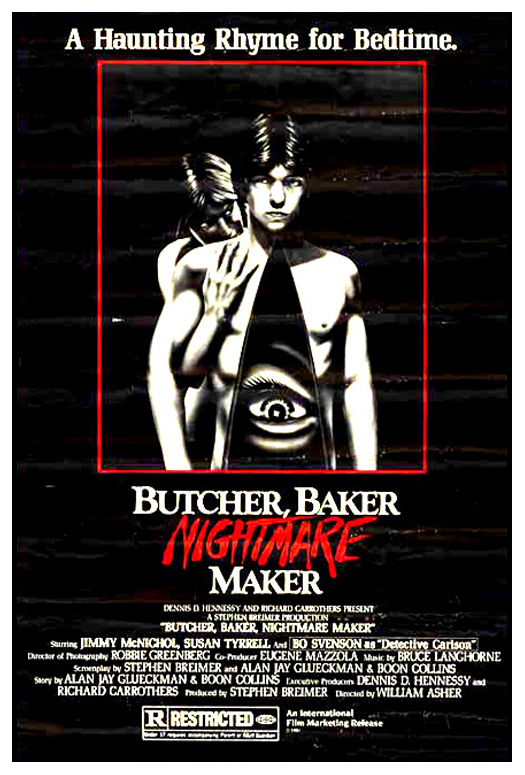
The movie is an Oedipal nightmare about a teenager, Billy (McNichol), who has been raised by his aunt, Cheryl (Tyrell), since infancy after the death of his parents in a tragic car accident. As Billy’s sights are set on leaving home for college, Cheryl begins to spiral into incestuous and murderous sexuality. In time, a bigoted detective, Joe (Svenson), begins to theorize wildly about a gay element in the events, abusing his authority and his community.
Butcher, Baker, Nightmare Maker is a mess of a film anchored by a handful of great performances and some thematic ideas that, while interesting, never coalesce into something more significant. The film’s twist is introduced somewhat haphazardly about mid-way through the runtime and doesn’t land. The movie also has an odd ending comprising two endings and a text crawl depicting later events. In many ways, the story is handled pretty poorly – the twist doesn’t feel earned, the more exciting elements of the story are brushed aside, and the overall pacing feels uneven.
The film also has an uneven feel due to direction and cinematography as the credited director and cinematographer, Asher and Greenberg, fill in for the original crew who were removed for the film. The opening sequence depicting the car accident is wonderfully shot and paced and has a real film quality. The rest of the film has the texture of a made-for-TV movie of the 1980s. One wonders how the film would have ended had the studio had more faith in Michael Miller and Jan de Bont.
The real appeal of the film comes from some of the performances. One performance that falls short is 1980s teen heartthrob Jimmy McNichol. McNichol’s Billy is generally wooden and ineffectual, with little going for him beyond looking good in peril. In most other slasher films, such a performance would be reserved for a female victim, which is an exciting component of the film’s queer coding. I get a sense of an “arrested development” theme to Billy’s story, but Billy’s aunt may better express the theme. Cheryl drives the movie.
No, the real performances in the film are those of Susan Tyrrell and Bo Svenson. The film’s energy is highest when the two are together on screen. Susan Tyrell’s menace as Cheryl is both disturbingly sexy and brutally unhinged. Her overall character actor performance style pulls the movie together through the sheer force of will that are her character choices. Bo Svenson is just a game, playing the detestable ideal of the bad cop, the one people envision when they think about the abusive excess of the law. Bo Svenson is the toxic masculinity to the unhinged femininity of Susan Tyrell.
Oh, and Bill Paxton is there being Bill Paxton. Always a welcome presence in any film.
Joe Bob-servations on Butcher, Baker, Nightmare Maker
I think that Joe Bob did a great job selling the arrested development theme of the night overall. While the film ostensibly centers around the dangerous developmental restraints placed on Billy by his unhinged Aunt, we also see that by the end, the film is very much focused on her lack of development.
I’ve been hesitant to embrace the show’s tendency this season to make a definitive claim on the themes of the pairings, especially when they do not work. I am likely the only person in the Mutant Fam who is fixated on this, but I’d prefer pairings to be less explicitly unified by the show and instead uncover them for myself. But that is just me.
Naturally, Joe Bob’s insights were welcome as ever. We return to the fascinating topic of Susan Tyrrell again after last Halloween’s Angel (1983). We also get some background on Bo Svenson and learn that he wasn’t necessarily the most popular guy on set.
My favorite discussion was about Jimmy McNichol’s role in the film’s creation and just how big of a deal he was. The McNichol craze was before my time, but I managed to get a real sense of why McNichol being in this movie was such a strange thing. While I feel Joe Bob can be a bit hit or miss regarding queer subtext in films, I think his discussion on McNichol’s relationship to the queering of the 1980s was fascinating. A great deal of it was based on a book by Jefferey P. Dennis titled Queering Teen Culture: All-American Boys and Same-Sex Desire in Film and Television, but I found the overall discussion quite interesting.
Final Thoughts on Butcher, Baker, Nightmare Maker
Butcher, Baker, Nightmare Maker is such a strange film, but one that is anchored by some incredible acting by Susan Tyrrell and Bo Svenson that you cannot help but be sucked into it. Ultimately, it seems that Butcher, Baker, Nightmare Maker is a film that seeds loftier themes and ideas than it is capable of sewing, resulting in a curious, yet ultimately minor, chapter of queer cinema. It is a film that could benefit from a remake, though any such remake would struggle to capture the scene-chewing fun of Tyrrell and Svenson.
Joe Bob gave the film 4 out of 4 Stars. I would beg to differ. I’d give Butcher, Baker, Nightmare Maker 3 out of 5 Cthulhus.
 (3 / 5)
(3 / 5)
Best Line: “Perverts and sluts! They are doing everything they can to take him away from us.” – Cheryl
The Baby (1973)
So she has become an insane social worker vigilante#thelastdrivein @therealjoebob @kinky_horror @shudder— Haunted MTL 🏳️🌈 (@HauntedMTL) June 11, 2022
The Baby is a 1973 psychological thriller directed by Ted Post and written by Abe Polsky, a playwright. The cinematographer is Michael D. Marguiles. Curiously, the credited director and cinematographer came into production after it had already begun. The film stars Anjanette Comer, Ruth Roman, Marianna Hill, David Mooney (credited as Manzy), and Suzanne Zenor.
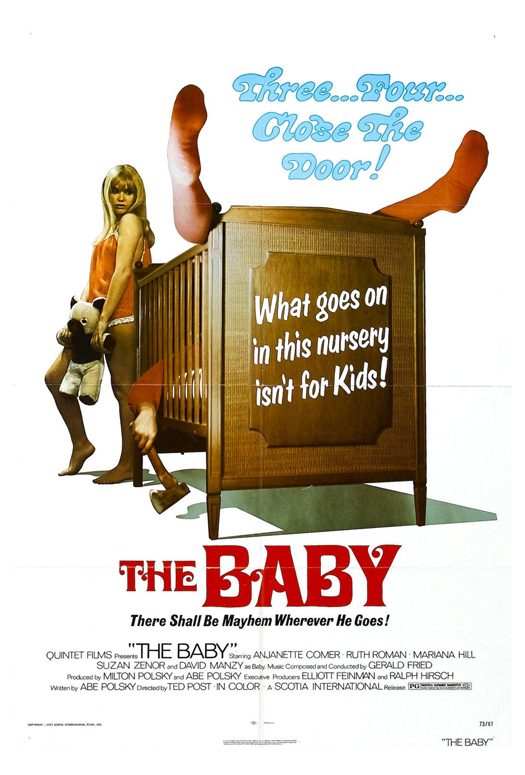
The Baby follows social worker Ann Gentry (Comer), who is still traumatized by a car accident that has had severe repercussions on her husband. Her latest case puts in in touch with the Wadsworth family consisting of Mrs. Wadsworth (Roman), sisters Germaine and Alaba (Hill and Zenor), and the intellectually disabled son, known only as Baby (Mooney) who has been raised into his 20s as an infant. The Wadsworths raise Baby as an infant and use him to pay for the home with state funds. Ann Gentry takes a particular interest in the case, but her obsession also begins to take a problematic turn.
The Baby is a pretty wild film and a great example of the “arrested development” theme of the show. Much like the preceding film, viewers are presented with a twist in The Baby, but this one feels more earned. With that being said, the set-up could have been a bit stronger. For a time, viewers may forget that Ann was even married. The story is quite good, making a strange custody struggle into an epic interpersonal conflict between two strong women, and the hapless male has been rendered into little more than an infant.
Like the previous feature, this is another film driven by performances. Ruth Roman’s Mrs. Wadsworth owns the movie, but Anjanette Comer is suitably game to keep up with her, and they play their roles with earnest and unhinged conviction. The film is propelled by the power struggle of the two women, and the push and pull between them are exhilarating. It is not even a battle of good vs. evil, as Comer’s Ann Gentry reveals a specific unhinged menace that makes viewers wonder if they can trust anyone.
Of course, maybe the film’s strangest and most affecting performance is that of David Mooney as Baby. Any actor can play what reads like an infant. Mooney inhabits the role in such a shocking and unsettling way that it can be profoundly disturbing. The vocalizations Mooney manages are haunting. An adult acting like a baby is easy to tell because generally, adults do not ambulate the right way, nor do they portray the sensory overload of an infant well enough. Mooney does, though. It’s intense.
The pacing of the film is excellent. Not a moment feels wasted. However, the cinematography is adequate but not overly impressive. The Baby is very much an actor’s film. Director Ted Post, a veteran of television, very much comes from the background of directing an actor’s medium instead of spectacle, and the film’s cinematography by Michael D. Marguiles is in line with Post’s perspective. However, the film does look good, and the transfer played on Shudder was fantastic.
Joe Bob-servations on The Baby
Joe Bob’s host segments here primarily focused on elements of the production and the apparent themes of the film. With such a strange movie, themes are a little harder to parse, so I found that Joe Bob leaned more heavily on production details. Specifically, Joe Bob paid much attention to director Ted Post and his collaboration with writer Abe Polsky. I got the impression that Post saw himself as a vessel by which to deliver Polsky’s writing, not so much wanting to interject himself or his thoughts into the feature.
The other production angle that was particularly interesting was the antagonistic relationship on set between veteran Ruth Roman and the younger Anjanette Comer. There was a lot of discussion of Ruth Roman as an actress, and Darcy even cosplayed Mrs. Wadsworth. That conveys how much of a role Roman had in the perception of the film. Of course, much was made about the performance of David Mooney and how he pretty much quit acting after playing Baby. If you’ve peaked, why climb higher, right?
Speaking of peaking, is Baby the peak of the concept of arrested development? It sure seems so.
Final Thoughts on The Baby
The Baby is a weird one. While it isn’t as extreme as Blood Sucking Freaks, it’s a very unsettling film. The internal logic is maddening, reflecting a far less enlightened perspective on abuse and development than we might see today. The film is also equally cruel and kinky, creating a wildly uneven tone that swings between camp and horror. However, it all seems to work. The core drama of two women fighting over an infantilized male creates rich opportunities for dramatic performance. If you can get through the initial revulsion that more fetishistic elements of the movie might bring on, you will witness a compelling duel.
Joe Bob gave The Baby 4 out of 4 Stars. I am pretty close to that myself. I give The Baby 4 out of 5 Cthulhus.

Best Line: “Maybe you think too much. When it comes to Baby, I do all the thinking.” – Mrs. Wadsworth
Haunted MTL Drive-In Totals
We have the official Drive-In Totals from Shudder for this evening of arrested development.
I'm sorry, "Log through the face?" Look, drunken children deserve to celebrate their birthday too, amiright? #TheLastDriveIn pic.twitter.com/mpfdaMwj8G— Shudder (@Shudder) June 11, 2022
I'm already getting Final Destination 2 flashbacks. #TheLastDriveIn pic.twitter.com/UC2y9r3B11— Shudder (@Shudder) June 11, 2022
As for our totals at Haunted MTL, we have…
- 3 Bad Mommies
- 6 “Thee-ate-ers”
- Surprise Bill Paxton
- Bloody Bossom
- Boss Bitches
- Multiple Red Flags
- Gratuitous Nephew Touching
- Gratuitous Key Party Vibes
- Gratuitous Homoerotic Lockerroom Shenanigans
- Scene Chewing
- Problematic Word Dropping
- Dead Baby Jokes
- Ugly Baby Joke
- Bunny and Snake Joke
- Steven King Name Drop Fu
- Clipboard Fu
- Double Ending Fu
- Twist Fu
- Custody Battle Fu
- Chart Fu
- Billy Rolls
- Darcy Cosplay – Mrs. Wadsworth

Episode Score for the Last Drive-In: S4E7 – Butcher Baker Nightmare Maker and The Baby
Season 4, Episode 7 was a solid night for the show, where most nights are pretty much solid anyway. This week’s double-feature selection may not win over every mutant, but the bonkers nature of the films and their pairing work pretty well and are worth the experience. While I think that The Baby, arguably the more unsettling film was also the better film, that is not to say that Butcher, Baker, Nightmare Maker is terrible either. The central idea of them representing arrested development worked out pretty well, though I feel these films might have been better suited for a Mother’s Day marathon.
Regardless, a fun time at the Drive-In with the mutant fam, as we have come to expect.

What did you think about the movies? Which do you feel was better? Did “arrested development” night work for you? Let us know in the comments. We’d love to hear your thoughts!
Please join us on Twitter next Friday as we live-tweet with the rest of the Mutant Fam during The Last Drive-In with Joe Bob Briggs.
What does Freud have to say about *this* mess?#thelastdrivein @therealjoebob @kinky_horror @shudder— Haunted MTL 🏳️🌈 (@HauntedMTL) June 11, 2022
Can’t get enough of The Baby? (Sponsored)
Why not snag yourself a copy of the Arrow Video Blu-ray release of The Baby on Amazon? Using our sponsored link will help Haunted MTL continue to cover horror content.
David Davis is a writer, cartoonist, and educator in Southern California with an M.A. in literature and writing studies.

You may like
Movies n TV
American Horror Stories, The Thing Under The Bed
Published
2 days agoon
November 19, 2024
We’ve reached the final episode of American Horror Stories, season three. After the ups and downs of the season, I didn’t know what to expect. I felt that we were due a big finish, Killer Queens. But I feared we were in for a big letdown.
As it turns out, The Thing Under The Bed was neither.
The story
We begin our story with a little girl named Mary, who is scared of something under her bed. She sneaks out of her room, only to be caught by her father and sent back to sleep. And of course, there is something horrible waiting for her under her bed.
This scene cuts away to a woman named Jillian. She has strange dreams, including one about Mary. But her husband, Mark, doesn’t want to hear about it. He’s only interested in a little lovemaking because he wants a baby. Jillian doesn’t, which makes total sense because she’s already married to one. But her irritation with her childish husband goes away when he goes away. And by goes away, I mean he’s sloppily devoured by something vicious under their bed.
What worked
In short, this episode just worked. The acting was professional and believable. The cinematography and lighting work were wonderful, adding spooky effects and startling moments without impairing visibility.
Best of all, the story was solid. There were no plotholes to be found. Our main character, Jillian, was relatable and sympathetic.
This was maybe my favorite part of the story. I thought Jillian was a remarkably sympathetic character. She was dealt a hand she never asked for, having her husband slaughtered in their bedroom. I don’t think she missed him, so much as she was afraid of the legal ramifications of being caught with literal blood on her hands.
Then, when it would have been safest for her to just lay low and save up for a good defense attorney, she instead goes into unlikely hero mode. She does her best to save people, putting herself in legal and physical danger. It’s hard not to root for her.
It’s also a little hard not to root for the antagonist, too. I don’t want to ruin the twist for you, so I’m going to tread lightly here. But it’s great when you have an antagonist who might be off their rocker, but also maybe has a point.
What didn’t work
I can only really think of one complaint with this episode. And that is how frequently one character says the word Chickadee. And if you’ve seen the episode, you know what I am talking about.
I get it, he has a pet name for his daughter. It’s adorable. It’s meant to convey that the two of them have a healthy loving relationship and I get it. We all get it. Blind monks get it. But the fact remains that no parent on Earth calls their kid by their pet name every single time they speak an individual sentence to them. It was just too damn much.
All in all, this was a good episode. It was a classic story, turned on its head, told by professionals from start to finish. And I hope that if there is another season, we see more stories like this one. But after the efforts put into this season at large, I wouldn’t be surprised if this is the last we see of American Horror Stories.

If you’ve watched enough short-form horror anthology shows, you’ll notice that some stories are mainstays. Each show seems to put on the same sort of episodes, with the occasional surprising storyline that we’ve never (or at least rarely) seen before.
Leprechaun was an example of a repeated story—the story of a greedy thief whose punishment far outweighs the crime.
The story
We begin our story in 1841, with a drunk man leaving the bar one late night. He’s distracted by something glowing at the end of the well. When he reaches down for the glowing thing, he falls in. Moments later, he screams.
We then cut to the modern day. The well is still there, and now it’s surrounded by a dying town. In this town lives a young man named Colin. He’s married, his wife is pregnant, and he’s out of work. Like many of his friends.
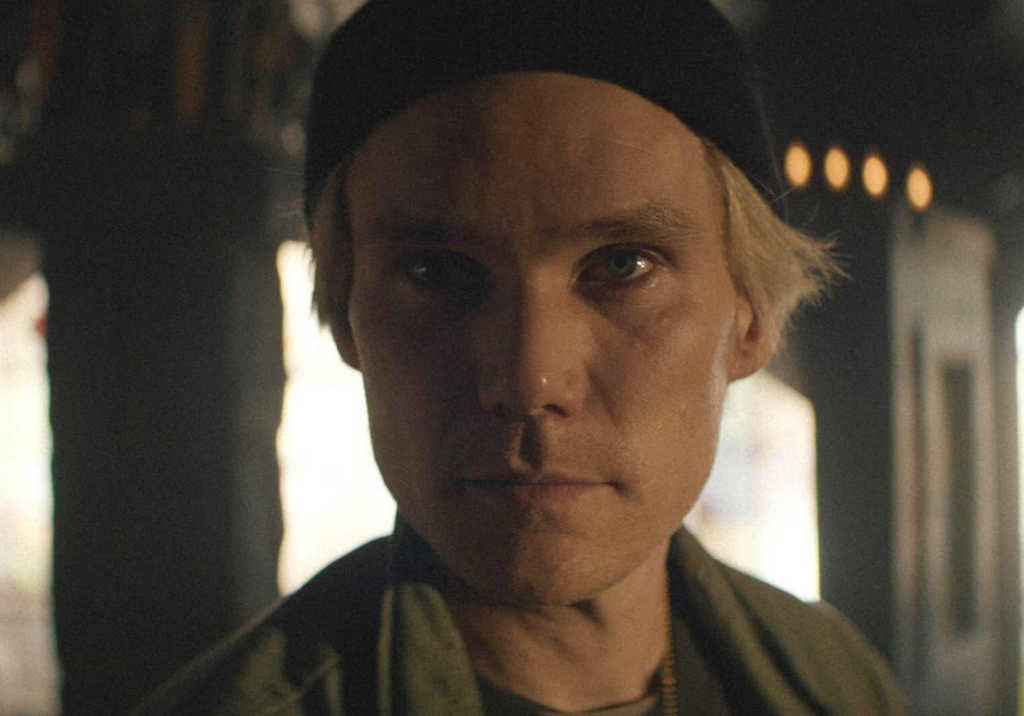
Desperate for cash, Colin and his friends decide to rob a bank. They put together an Equate version of Ocean’s Eleven, and break in one night. But, of course, they find that the gold is nothing more than bait. And the creature waiting for them is something they never expected.
What worked
The first thing I want to point out is how real this episode felt. At least to anyone currently living in the same small town they grew up in. These characters felt like guys I went to school with. Guys I would see at the bar.
I appreciated the real anger and frustration these characters are feeling. Especially Colin. He’s bitter, and maybe he has a right to be. He did exactly what he was supposed to do to succeed. He went to school and invested in his career, and yet now he’s out of work and struggling to support his family. I probably don’t need to tell you how that feels. Because of this, we can all kind of understand why he was tempted to rob a bank.
I also want to talk about the fact that this was, as I said, an often-explored story. That can be a bad thing, but it can also be a good thing. This story is told over and over because it’s a good story. A relatable story. And there’s nothing wrong with that.
What didn’t work
That being said, this version didn’t try to do much to break out of the mold.
Because we have seen this story so many times, most of us could tell the story themselves. I would have expected something new, or some twist. But, in the end, the story didn’t bring anything new to the discussion.
Maybe because of this, the ending left a lot to be desired. Trapped in the basement of the bank, everyone just sort of stares at everyone else, until the thieves give up. And that’s it. The ending wasn’t scary, shocking, or funny. It was just sad, on multiple levels.
Overall, this was an okay story. It was entertaining, if not surprising. I would compare this episode to homemade macaroni and cheese. Everyone’s got their own version, they’re all pretty good, and none of them are exciting.
There’s just one episode left in this season of American Horror Stories. Let’s hope they’ve saved the best for last.

It happened. It finally happened. We got another good episode of American Horror Stories.
The story
We begin our story late at night, with a hospital security guard named Malcolm. He is frightened one night when he sees a woman with a distorted face in the hospital parking lot.
We then joined an RN named Claire. She’s doing her best to explain to a struggling mother that the hospital will not be able to treat her son with cancer because she can’t afford the treatment.
Not like she’s happy about it.
Fortunately, Dr. Nostrum, played by the legend Henry Winkler, swoops in at the last moment to tell the mother that her son qualifies for a special place in his cancer treatment clinic.
Claire is lamenting the fact that she became an RN to help people, but it feels like she isn’t doing anything good. Then, she and her friend Lilly stumble upon the same woman who menaced Malcom the night before.
While Claire is trying to figure out what’s wrong with this woman, she brutally slaughters an orderly and vanishes into the hospital. But not before struggling to say two words to Claire. Ward X.
What worked
I want to start by praising the effects of this episode. Because they were fantastic. Aided by the black and white filming, the bloody and distorted faces of Alice and her fellow victims are nightmarish. They look like a horrific version of Lockjaw taken to a terrifying extreme.
I also want to discuss the fantastic work of Henry Winkler. He is an absolute legend and never has a bad project.

Winkler’s character in this episode was exactly what we’d expect from him. He seems genuinely warm and kind, concerned about others’ well-being. Even when he’s planning to kill Claire, he comes off as such a caring guy.
Finally, I want to talk about the historical significance of this story. Because, like I always say, the scariest stories are the ones based on truth. And I’m sorry to say, this story has a basis in truth.
Mankind has a dark and twisted history when it comes to medical advances. Most doctors and scientists are good, moral people who abide by the first line of the Hippocratic oath, to first do no harm. Some, historically, are little more than monsters in white coats. Consider the Tuskegee Experiment, Unit 731, and the horrific acts of Josef Mengele. If you’re going to look up that middle one, be warned that it is NSFL.
While this episode of American Horror Stories was a work of fiction, it wasn’t that far off. I don’t think many of us want to admit how close to real life it was. This is the gift of good horror, to force us to come face to face with the worst aspects of humanity. To acknowledge them, accept them, and change them.
All in all, this was a perfect episode. The acting, the effects and the story were all top-shelf. And it’s certainly a story that will stick with you.
There are just two episodes left in this season of American Horror Stories. Let’s hope that they reach closer to the quality of X, and away from the dull and dismal episodes that began the second half of this season.

Trending
-
Book Reviews7 days ago
Review: Don’t Eat the Pie, Monique Asher’s delicious trope fest.
-
Movies n TV4 days ago
American Horror Stories, Leprechaun
-
Original Creations4 days ago
Religious Icons Revisited for the Second Second Coming
-
Movies n TV2 days ago
American Horror Stories, The Thing Under The Bed

